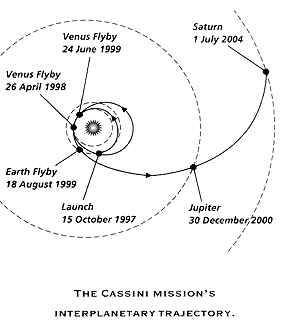
MGS has had previous mechanical problems. You may recall from our earlier reports that its mapping mission was delayed for a year due to a broken solar panel attachment, which forced interruption of areobraking back in October 1997. MGS finally reached its desired 2-hr. mapping orbit earlier this year. In early March it carried out a 3-week mapping sequence with its high-rate antenna stowed, in order to ensure fulfillment of minimum mission science requirements, even in the event of some unexpected problem with its deployment. The antenna was finally deployed without incident on March 28. Normal mapping then began, with 12 orbits per day, including some high-rate, real-time orbits each day, and a 10-hr DSN (Deep Space Network) pass. However on April 15 mapping was interrupted and the spacecraft was found to be in contingency mode, with science instruments off. The reason was some problem in the antenna azimuth drive, which blocked its motion before it could reach its intended position for playback.
Further study has shown that normal operations can actually continue through February 2000 without exceeding the current limitations on the range of the antenna's motion. Since the basic mapping mission is just one year, this should be almost enough to complete it without significant loss. If the problem is not resolved by next February, the geometry between the Earth and Mars again becomes unfavorable, and the spacecraft may have to be operated in a mode in which it periodically breaks off observations of Mars and turns to point the antenna towards Earth. The range of azimuth motion appears to be stable and the consensus seems to be that it is unlikely to get worse. Mapping operations accordingly resumed on 29 April and are proceeding well so far.
In May 1999, as I write, the wide-field, low-resolution camera is being used to image the entire planet at 300 m resolution. Similar images were obtained by the Viking Orbiters, but it required 3 years and the MGS sequence will be much more homogeneous in such things as lighting and camera angle. The May images will be used to build a precision reference grid tying data from the narrow angle camera and all the other instruments into one system.
Yet it is simply impossible to adequately cover the riches of images and scientific data from a spacecraft in the space available here. I urge the reader to give themselves the excitement and pleasure that only examining the new results first hand can afford. Fortunately numerous mirror WWW sites are available, including one for South Africa: http://www.southafrica.co.za/mars/mgs.
